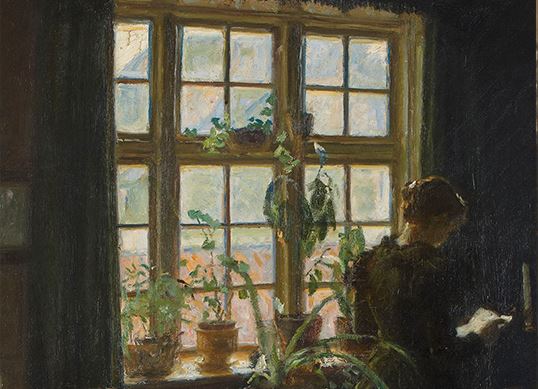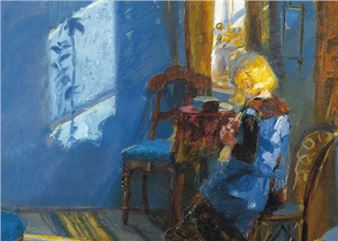Plant Fever. The World on the Windowsill
Most of us have at least one of them: a houseplant. In fact, Denmark has the highest number of houseplants per person anywhere in the world. In the upcoming special exhibition Plant Fever. The World on the Windowsill, created by The Hirschsprung Collection and Ordrupgaard, the two museums are the first ever to focus on the houseplants that surround us in our homes and daily lives. The result is a major exhibition that unfolds across both museums.
With the exhibition Plant Fever. The World on the Windowsill, Ordrupgaard and The Hirschsprung Collection tell the story of how a wealth of imported plants, then regarded as highly exotic, made their way into Danish homes in the nineteenth century. A veritable plant craze spread, and soon those previously foreign plants became a natural part of everyday life. Houseplants feature prominently in nineteenth-century paintings and drawings. Yet the hidden stories of these plants and their global origins remain an unexplored angle in Danish art history. That is now being changed by The Hirschsprung Collection and Ordrupgaard.
The plants were moved across vast distances as part of the large-scale plant transfers that began in earnest in the seventeenth century ā€“ displacements that transformed the flora and fauna of multiple continents. While many of the plants were or became endangered in their native habitats, they flourished in European living rooms. The plants brought Europeā€™s colonial history into the home. At the same time, people and plants formed a bond that opened ā€“ and continues to open ā€“ up ways of entering into a more caring, diverse and historically aware relationship with nature.

Recommended for you
Most of us have at least one of them: a houseplant. In fact, Denmark has the highest number of houseplants per person anywhere in the world. In the upcoming special exhibition Plant Fever. The World on the Windowsill, created by The Hirschsprung Collection and Ordrupgaard, the two museums are the first ever to focus on the houseplants that surround us in our homes and daily lives. The result is a major exhibition that unfolds across both museums.
With the exhibition Plant Fever. The World on the Windowsill, Ordrupgaard and The Hirschsprung Collection tell the story of how a wealth of imported plants, then regarded as highly exotic, made their way into Danish homes in the nineteenth century. A veritable plant craze spread, and soon those previously foreign plants became a natural part of everyday life. Houseplants feature prominently in nineteenth-century paintings and drawings. Yet the hidden stories of these plants and their global origins remain an unexplored angle in Danish art history. That is now being changed by The Hirschsprung Collection and Ordrupgaard.
The plants were moved across vast distances as part of the large-scale plant transfers that began in earnest in the seventeenth century ā€“ displacements that transformed the flora and fauna of multiple continents. While many of the plants were or became endangered in their native habitats, they flourished in European living rooms. The plants brought Europeā€™s colonial history into the home. At the same time, people and plants formed a bond that opened ā€“ and continues to open ā€“ up ways of entering into a more caring, diverse and historically aware relationship with nature.
Contact details

Related articles
In the upcoming special exhibition Plant Fever. The World on the Windowsill, created by The Hirschsprung Collection and Ordrupgaard, the two museums are the first ever to focus on the houseplants that surround us in our homes and daily lives.

 ARTISTS
ARTISTS











